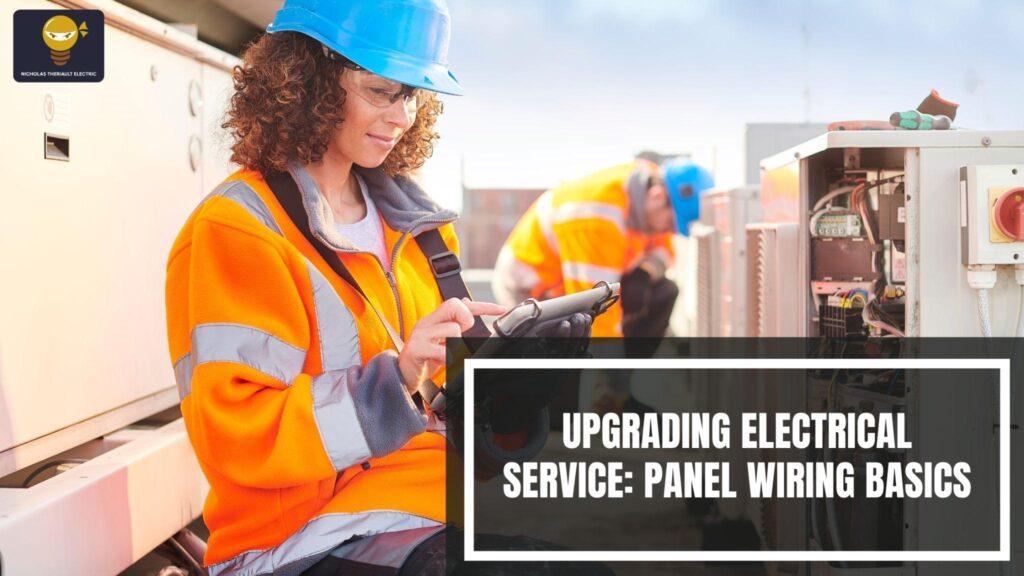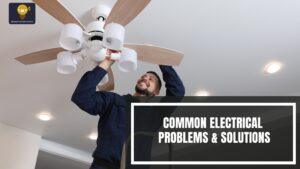Upgrading Electrical Service: A Complete Guide to Panel Wiring Basics
Is your home’s electrical panel struggling to keep up?
If your lights flicker when you turn on the microwave or your breakers trip every time you plug in something new, you’re not alone. Many homeowners are unknowingly relying on outdated electrical panels that weren’t built for today’s high-demand lifestyles. The truth is, an overloaded or aging panel isn’t just inconvenient—it’s dangerous. It puts your home at risk of electrical fires, system failures, and even costly appliance damage. As you add modern devices, upgrade rooms, or take on renovations, your electrical system might already be falling behind without you realizing it.
But here’s the good news: upgrading electrical service doesn’t just solve these problems—it sets your home up for the future. In this blog, you’ll discover the warning signs to watch for, the wiring basics you should know, and how to safely upgrade your panel to confidently power your lifestyle.
What Is Electrical Service Panel Wiring?
The electrical service Panel wiring, often called the breaker box or fuse box, is the central hub where electricity enters your home. The panel receives electrical power from the utility company and routes it to different circuits throughout your home.
Key Components of the Electrical Service Panel:
- Main Breaker: The large switch that controls power to the entire house.
- Circuit Breakers: Smaller switches that protect individual circuits by cutting off power if the current exceeds safe limits.
- Bus Bars: Metal strips that connect the incoming electricity to the breakers.
- Neutral Bus Bar: Provides a path for the return current.
- Grounding Bar: Ensures safe discharge of electrical faults.
Without the electrical panel, your home couldn’t distribute the electricity necessary to power everyday devices and appliances safely.
Why Does Upgrading Electrical Service Matter?
As homes become more energy-intensive with the addition of smart devices, electric vehicles, and high-powered appliances, an upgraded electrical service becomes essential. Here’s why upgrading electrical service is crucial:
- Increased Electrical Demands: Modern homes use significantly more electricity than older homes due to the growing number of devices and appliances.
- Safety: Older electrical panels, often found in homes built before the 1980s, may not be equipped to handle modern loads, presenting a fire hazard.
- Avoid Overloaded Circuits: If your home frequently experiences tripped breakers or power outages, it’s a sign that your panel may be underpowered.
- Renovations and Home Additions: Expanding your home or installing new electrical systems, such as a home theater or kitchen upgrade, requires a higher amperage capacity.
- Code Compliance: Electrical codes change, and your panel may no longer meet current standards, which could impact your insurance or safety.
Warning Signs: How to Know It’s Time for an Upgrade
If you’re unsure whether upgrading electrical service is necessary, watch out for these warning signs:
- Frequent Breaker Trips: If your breakers trip often, it could mean that your electrical panel is struggling to meet the demands of your home.
- Dimming or Flickering Lights: Lights that flicker or dim when using high-powered appliances signal that your electrical system is overloaded.
- Warm or Overheated Outlets: Overheating outlets or panels clearly indicate a problem and could lead to fires.
- Rust or Corrosion: Rust or moisture near your electrical panel could point to potential safety risks.
- Burning Smell: A burning smell near the electrical panel is an emergency. It could indicate electrical service panel wiring or circuit overload, posing a serious fire hazard.
If you notice any of these signs, don’t hesitate to call an electrician to inspect your system and potentially upgrade electrical service.
How to Choose the Right Electrical Service Panel for Your Home
Upgrading an electrical panel involves more than just picking out a new box. You need to ensure it can meet your home’s specific needs.
Step 1: Calculate Your Home’s Power Needs
Before upgrading your electrical service, determine how much power your home requires. The amperage of your electrical service refers to the total amount of electrical current that your system can safely carry at any given time. Most modern homes require 200 amps, but homes with additional needs, such as those with electric vehicles or heavy-duty machinery, may need 400 amps or more.
Consider factors like
- The number of circuits you need.
- The total wattage of your appliances and devices.
- Plans include a hot tub or electric vehicle charger.
If you’re unsure, an electrician can perform a load calculation to determine how much amperage your home requires.
Step 2: Understand Breaker and Fuse Options
While upgrading electrical service, you may also need to consider the type of breakers or fuses in your system. There are two main types:
- Standard Circuit Breakers: These are the most common and are designed to trip when a circuit is overloaded.
- GFCI Breakers: These breakers protect against ground faults and are necessary in areas like bathrooms, kitchens, and garages.
How to Upgrade Your Electrical Service
Upgrading electrical service involves several critical steps, many requiring a licensed electrician due to safety codes and regulations. Here’s a breakdown of the upgrade process:
1. Shut Off Power
Before beginning any work on the electrical panel, ensure that the main power to the house is completely shut off. This step is usually done by disconnecting the power from the utility company.
2. Remove the Old Panel
Once power is off, the existing panel will be removed. An electrician will safely disconnect the circuits, remove the old panel, and prepare the area for the new installation.
3. Install the New Panel
The new 200-amp panel (or higher, depending on your needs) is installed by securely mounting it on the wall. The incoming utility wires are connected to the new panel, and the system is grounded according to the latest codes.
4. Reconnect the Circuits
After installing the new panel, the electrician will reconnect the circuits to the appropriate breakers. Each circuit is labeled clearly for future reference. This ensures you can easily identify each circuit if maintenance or troubleshooting is required.
5. Inspection and Testing
Once the installation is complete, the panel will be thoroughly inspected to ensure compliance with local codes. After inspection, the utility company will reconnect the power to your home.
6. Final Check
After restoring power, the electrician will test the system to make sure everything is functioning properly and safely.
Common Mistakes to Avoid During Panel Upgrades
When upgrading an electrical panel, there are several mistakes you’ll want to avoid:
- Improper Sizing: Choosing a size that is too small for your needs could cause overloading and safety issues. Always ensure the amperage matches your home’s power demand.
- Overcrowding the Panel: Avoid cramming too many circuits into your panel. This could cause overheating or breakers to malfunction.
- Inadequate Grounding: Proper grounding is essential to protect your home and electrical system from electrical surges, faults, or lightning strikes.
- Ignoring Local Codes: Ensure your electrical service upgrade complies with local electrical codes. Failing to do so could lead to penalties or insurance issues.
FAQs About Electrical Panel Upgrades
- How long does it take to upgrade an electrical panel?
Typically, upgrading an electrical panel can take 6 to 10 hours, depending on the complexity and whether electrical service panel wiring is needed.
- Can I upgrade my electrical panel myself?
A licensed electrician should handle it, as it’s not recommended otherwise. Upgrading an electrical panel requires knowledge of electrical codes and safety standards.
- What’s the cost of upgrading an electrical panel?
The cost of upgrading can range from $1,500 to $4,000, depending on the size of the panel, the amount of rewiring, labor costs, and any permits required.
- Do I need a permit for an electrical panel upgrade?
Yes, most regions require permits and inspections for electrical work to ensure it meets safety codes.
- How can I tell if my panel needs upgrading?
Signs of an outdated or insufficient panel include frequent breaker trips, dimming lights, warm outlets, or any visible damage to the panel.
Conclusion: Why You Should Upgrade Your Electrical Service
Upgrading electrical service is an investment in your home’s safety, functionality, and efficiency. It ensures your system can handle modern electrical loads, reduces the risk of fire hazards, and prepares your home for future needs. You can provide a smooth and safe upgrade process by following proper procedures, working with licensed professionals, and staying compliant with codes.
Ready to upgrade your electrical service?
Don’t wait for problems to arise. Contact an NT Electrician today for a professional evaluation and safe, efficient electrical panel upgrade. Make sure your home is ready for the future—call now!






